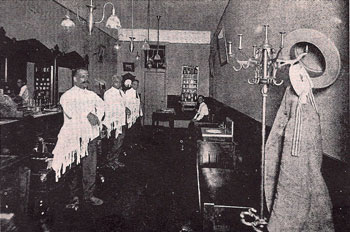In the Archives: “Freedmen’s Progress”
Editor’s note: Laura Bien’s In the Archives column for The Chronicle appears monthly. Look for it around the end of every month or sometimes towards the beginning.
A recent Ward 1 Ann Arbor city council candidate forum included some discussion of the African American Cultural and Historical Museum of Washtenaw County, to be located on Pontiac Trail. In this month’s column, Bien takes a look at one piece of African American history with an Ann Arbor connection – the 50th anniversary of the ratification of the 13th Amendment to the U.S. Constitution.
Ann Arbor barber Henry Wade Robbins is one of many Washtenaw County residents singled out for commendation in a largely forgotten but historically invaluable book assembled in just three months in 1915. “Mr. Robbins has completely negated the popular fallacy that in order to be successful in the barber business the boss was required to draw the color line in his patronage,” says the work’s biographical entry for Robbins.
“This Mr. Robbins has never done. He treated all gentlemen alike and catered to high-class trade, both white and colored, and he has numbered and still numbers among his patrons many of the best-known white people in Michigan …” Robbins owned his own shop and its upstairs apartments at 117 Ann St. where he, his wife Martha, and their son and daughter lived.
The book’s data on employment, home ownership, and achievements by black Michiganders was collected and compiled by a panel of Michigan African Americans selected by Michigan governor Woodbridge Ferris. Their work was compiled into the “Michigan Manual of Freedman’s Progress” (MMFP), which offers a cross-section of successful black Michiganders in the early 20th century. [Full Story]




